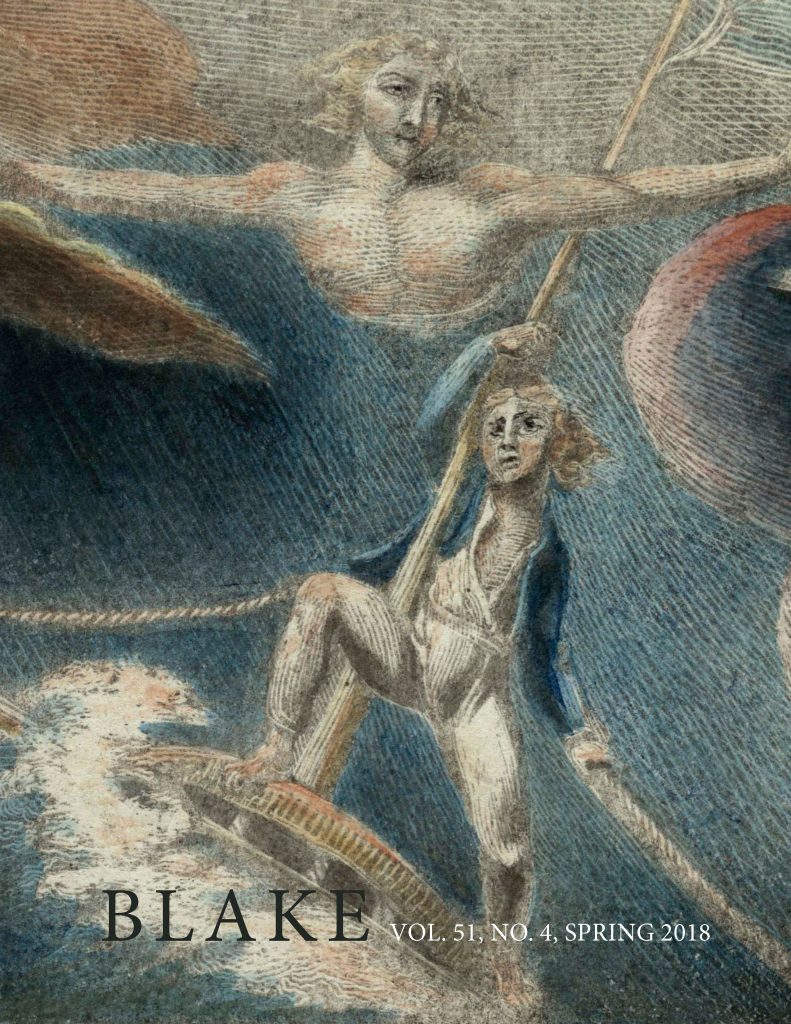Our spring issue, with another bumper crop of contributions, is out this week and, even better, open access for the next few days.
Putting any issue together is an organic process; I first decide on the main article, which requires no thought in spring because it’s always the Essick sales review, and work from there. In this issue, for instance, there are two discussion pieces that I had little idea would be part of it when I began.

Little Tom image reproduced by permission of the Master and Fellows of Trinity College, Cambridge.
The sales review (“Blake in the Marketplace, 2017”) is as interesting and informative as ever, especially in the mini-essays that accompany many of the illustrations. My favorite this year is a newly recorded copy of Little Tom the Sailor, which is why I chose a detail from Blake’s headpiece for the cover. I now harbor faint ambitions of seeing if anything more can be uncovered in the historical record about Tom’s mother—the Widow Spicer—and her family.
Our other article is the first part of a personal and joyful reflection by the composer Dmitri Smirnov on Blake as an inspiration for many of his works (the second part will appear in summer). Dmitri weaves the specifics of his compositions into a narrative of his life in Russia and then in England. Blake’s art and poetry have influenced him not just in the subject matter of his work but also in the minute particulars; for instance, The Moonlight Story, a chamber piece based on the watercolor Malevolence, has the viola player representing the character of the father leave the stage and play from the balcony to emphasize his separation from his doomed wife and child.
Karen Mulhallen’s remembrance of Jerry Bentley appeared in the autumn issue, and winter contained Jerry’s last article for us. In this issue we have a review by Sandy Gourlay of Jerry’s final book (as far as I know, though I wouldn’t be surprised to be proven wrong), on the publisher Thomas Macklin. As Sandy says, “Little is known about Macklin beyond the public facts of his commercial activities … but in his day he was second in importance only to John Boydell among English publishers of prints and illustrated books.”
Last summer we published a note by Chuck Ripley on two advertisements posted by Blake’s father, James Blake, in the 1770s (this note will also be open access for the next few days). We received a response from Keri Davies in which he argues that James was only providing a mailing address for third parties and that the ads do not refer to the circumstances of the Blake family. That response, and Chuck’s reply, which delves further into the keeping of cows in London, appear under our Discussion section in this issue. Both make extensive use of contemporary newspaper accounts—in the copyediting process I frequently got sidetracked by other items in the newspaper issues I was supposed to be checking. All this emphasized for me the difficulty of comprehending what Blake experienced when he stepped outside his childhood home at 28 Broad Street.
